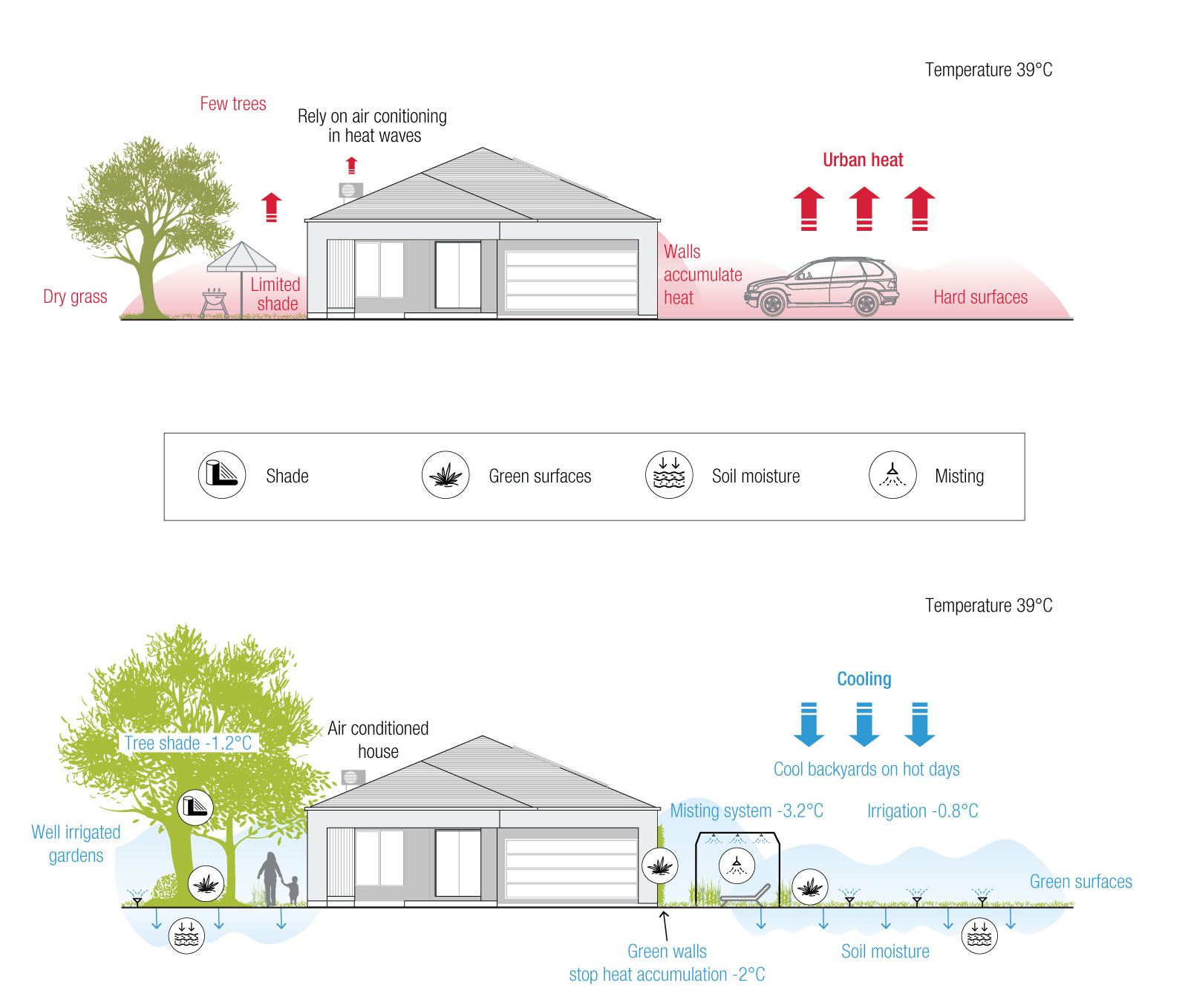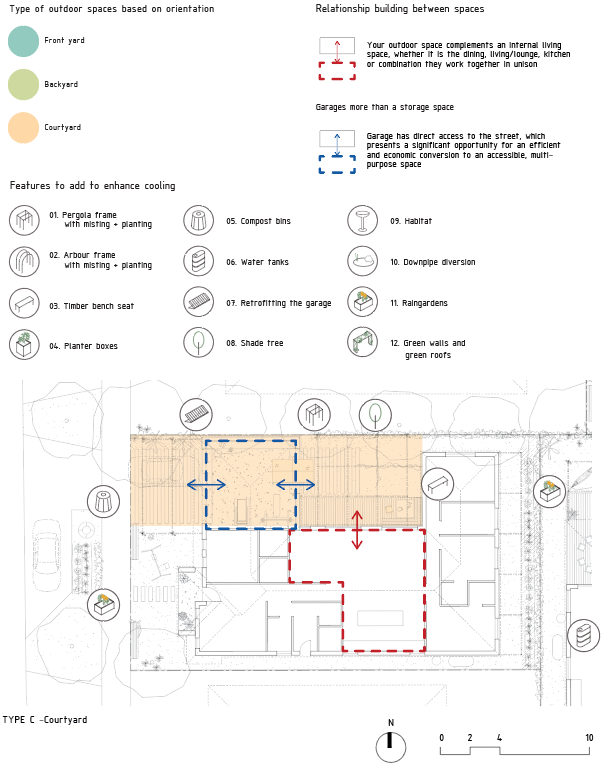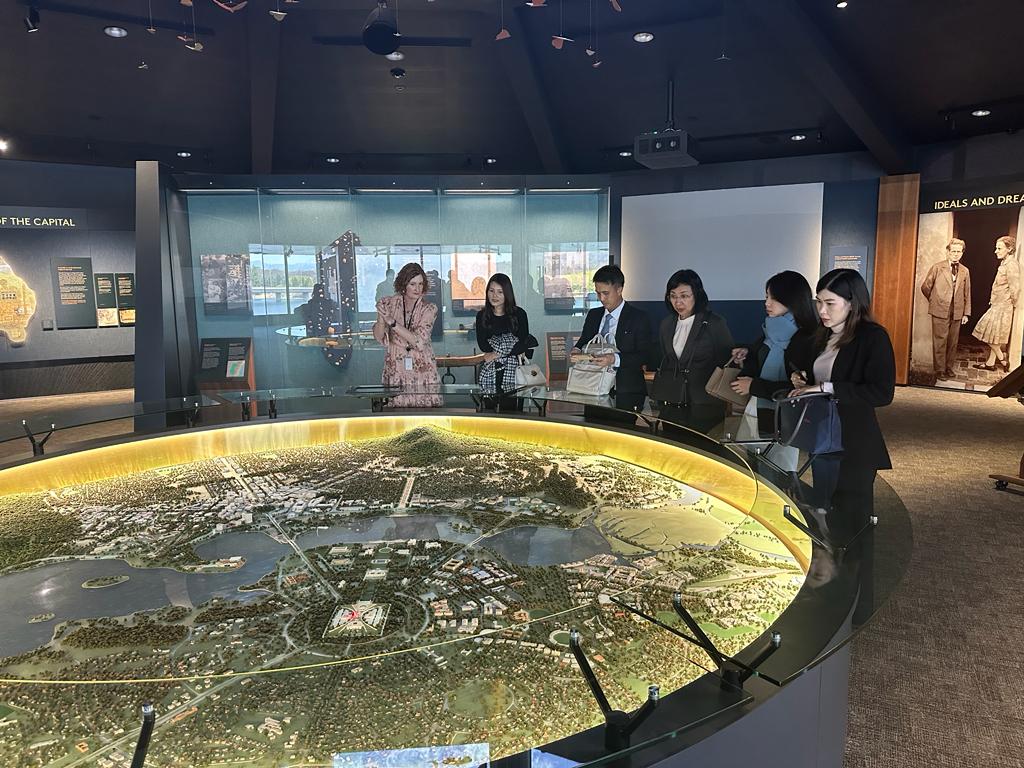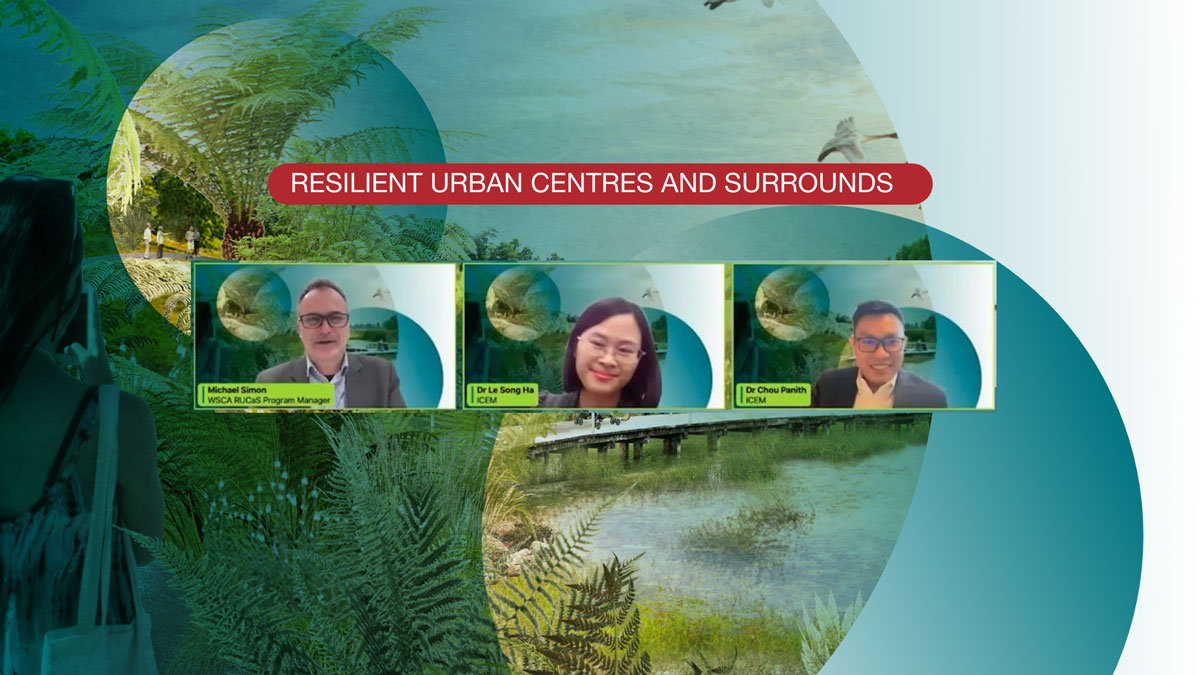It's been a hot summer in the northern hemisphere. And it looks like summer 2023-24 will be hot in Australia. Finding effective ways to keep cool over summer is important for our health and comfort. Finding sustainable ways to stay cool is important for the planet.
A new practice guide – Using water to cool residential outdoor spaces – shows how easy it can be to use water wisely to create cool, comfortable outdoor areas around the home. It involves combining water, plants and architecture to create natural shade, cool the air and cool the ground. Smart technologies can also help maximise the cooling effect.
Water Sensitive Cities Australia partnered with South East Water, researchers from the University of Melbourne, NMBW Architecture Studio and Coolth Inc. Living Architecture to develop the guide.
The guide explains the science behind water’s role in cooling. For example, research at the Aquarevo House in Melbourne shows irrigation can lower temperatures by 2oC. Keeping soil moisture levels high increases daytime evapotranspiration (the loss of moisture from grass and leaves), which cools the ground and the air above it. It also keeps trees and plants healthy, which provide shade and contribute to evapotranspiration. A shady tree can reduce temperatures by 1.2oC. Add a misting system, and you can lower temperatures by another 3.2oC (although the effect is short lived once the misting stops). These temperatures relate to Melbourne; results will vary from city to city.

The benefits of cooling with water
Cooling with air conditioning can be the best option in some situations. For example, during extreme heatwaves, the safest place is to be indoors in air conditioning. Similarly, air conditioning is very effective when humidity is high.
But at other times, always relying on air conditioning for cooling can have several disadvantages compared with shade, irrigation and misting:
- It traps us indoors, which affects both our physical and mental health.
- People who spend a lot of time in air conditioning become less acclimatised to heat.
- Air conditioning is expensive, with high upfront and running costs.
- It’s not environmentally sustainable. It produces waste heat that compounds the urban heat effect. It increases demand for electricity, and even exacerbates electricity shortages during heatwaves.
- Using air conditioning to compensate for poor dwelling design leaves residents vulnerable during power blackouts. These houses quickly become unliveable without air conditioning.

Step 1 – Start with somewhere you’d like to spend more time on hot days. It might be somewhere close to the house, so you can blend indoor and outdoor activities on a hot day. Or it might be an area you can use for active sports.
Step 2 – Choose architectural designs – or built features – that minimise heat absorbing surfaces, make room for plants and provide shade. An example is a wooden arbour frame, that supports both misting and plants.
Step 3 – Select plants for their shade and evapotranspiration characteristics, as well as their aesthetic, health and biodiversity benefits. It’s all about choosing the right plants for the right location.
Step 4 – Cool with water by installing irrigation and misting systems. Irrigate during the day to make the most of evapotranspiration and reduce stress on plants. Spray irrigation also cools the air, as does misting.
Step 5 – Use smart systems to save water. A smart irrigation system monitors soil moisture and uses water only as needed. For example, research found irrigating 1mm 4 times over an afternoon cools the air temperature more than irrigating 4mm all at once. Similarly, a smart misting system can activate only when the temperature drifts outside a ‘comfortable’ range.
Another way to conserve water is to use sustainable sources for irrigation, such as rainwater and recycled water. (For health and safety reasons, a misting system should use only drinking water.)

Supporting integrated urban water management in Thailand’s Eastern Economic Corridor

Get the run down on the RUCaS Regional Conference and Training, held over 4 days in November 2023

Improving climate change and water security outcomes for peoples with disabilities

New faces at Water Sensitive Cities Australia

